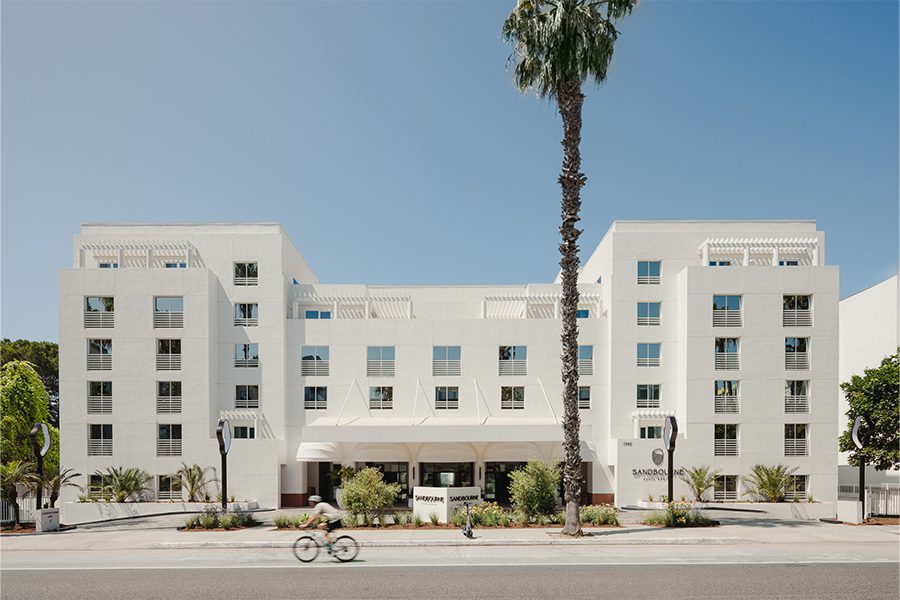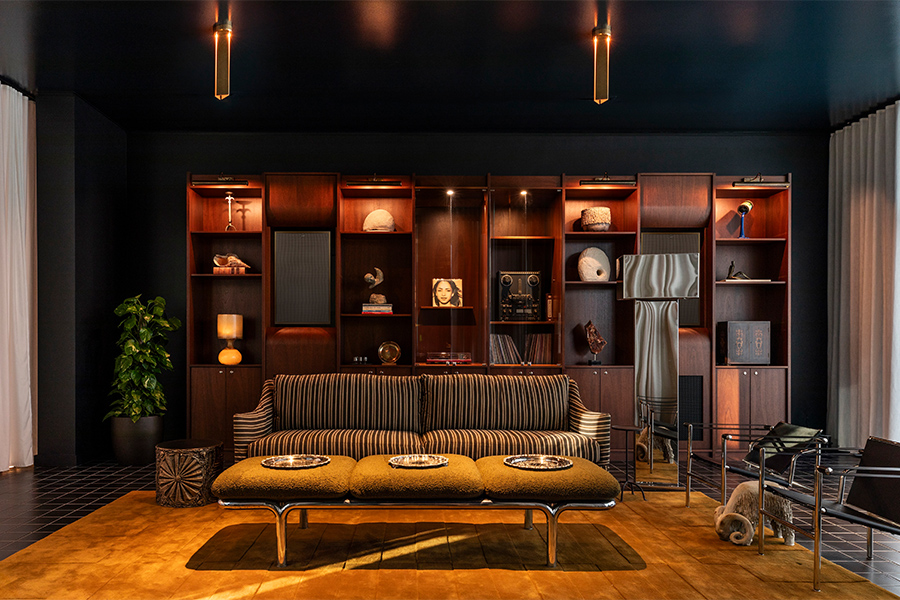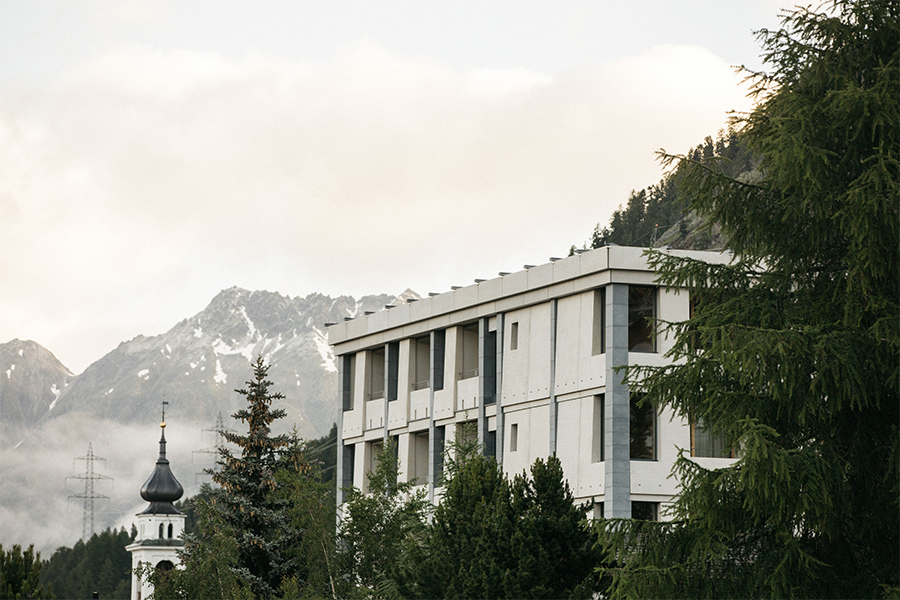From the Sandbourne Santa Monica in California, part of Marriott’s Autograph Collection, the views of the Pacific Ocean are exquisite. In its previous incarnation as the Le Merigot Hotel, however, they were marred by a hefty concrete railing that wrapped the lobby terrace.

A darker shade of terracotta defines Marelle restaurant, which includes a private dining room and a destination bar
When Gulla Jónsdóttir, principal of her eponymous Los Angeles- and Paris-based architecture and design practice, was tasked with reimagining the 175-room property, she immediately removed the barrier and replaced it with a sleek glass one to amplify sightlines of “the sandy beach and its sunrises and sunsets,” she says.
Francis Corso, vice president of development at Stockdale Capital Partners, the real estate investment firm that brought the project to life, was also struck by the location and knew the building’s existing state wasn’t befitting of the surroundings. “It had a bulky 1990s feel with a lot of dead space,” he says.
Jónsdóttir, (who was brought on board before Corso joined the company from KSL Resorts), knew exactly what to do. Her revamp began with the façade, which she enhanced with European-style cupola awnings. Along with lush plantings, there is also a pair of bronze incense-burning vessels wafting a bespoke scent, so that “when you leave the car and walk through these large arches we created, you’re smelling what the Sandbourne is all about. Everything was designed as a harmonious five-senses experience,” she explains.
Consider the triple-height lobby. Those soaring ceilings proved a boon to Jónsdóttir’s renovation because they provided “structural integrity,” she says. “Magically, we didn’t have to move so many walls or knock down too much. We narrowed the columns and made them a sculptural element.”

Behind the handcarved plaster reception desk, a repurposed fire hose installation takes centerstage
The chic space is “light, airy, subdued, and not too flashy,” Jónsdóttir adds. “Everywhere you look, there’s something tactile.”
Materials like cane mingle with alabaster-toned tiles, and the reception desk—handcarved from plaster—is reminiscent of sand ripples. Behind it, an installation designed by Jónsdóttir and installed by local artist Guerin Swing, is made of recycled fire hoses from the Santa Monica Fire Department. It’s a nod to the city that also sets the tone for the hotel’s abundance of works from global talents paying homage to beach culture.
Dominated by soft white hues, the lobby is enlivened with splashes of terracotta, an interplay of colors found throughout the property that Jónsdóttir considers soothing. Yet, in Marelle restaurant, she took a moodier approach, enveloping it in an exuberant darker shade of the earthy color.

Greenery and natural light enliven the triple-height lobby, while ethereal pendants dangle above the pool-facing bar
Guests anticipate the dramatic shift as they walk along the flagstone flooring of a corridor shrouded in wallpaper, its undulating pattern punctuated by a custom sculptural window that looks onto the bar. Once they’re past it, details such as Jónsdóttir’s monumental concrete sculpture (based on her jewelry collection) perched in an open window and white ceramic pendants await. Especially notable is the unused tower that Jónsdóttir converted into a multi-story outdoor private dining room draped in breezy curtains.
In the guestrooms, Jónsdóttir added new patio doors that complement graphic rugs and custom furniture. Meanwhile, the pool deck was also cleverly rectified. A staircase in the middle took up some 600 square feet, so Jónsdóttir relocated the beach access stairs and added a long space parallel to the pool filled with new cabanas. “I’ve never been involved in a project with this much thought process,” notes Corso.
Before, “you couldn’t sit around the pool properly, and now there are firepits, lounge seating, and the old gym is [now]a pool cabana bar,” Jónsdóttir points out. “It’s not enough that a hotel looks good,” she adds. “You need to feel good in it too.”
This article originally appeared in HD’s October 2024 issue.












